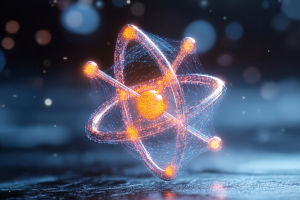Quantum mechanics and entanglement might sound like the stuff of sci-fi, but they’re fast becoming the backbone of next-gen technologies. From unbreakable communication networks to computers that solve problems in seconds instead of centuries, the bizarre rules of quantum physics are no longer confined to the lab—they're powering real-world breakthroughs.
Curious how this mysterious science is already shaping our daily lives? Let’s dive into the mind-bending world of quantum tech and discover how it’s transforming communication, computing, and sensing—one entangled particle at a time.
Quantum Entanglement: The Heart of Quantum Technology
Quantum entanglement is a unique connection between particles, no matter how far apart they are. Measuring one instantly affects the state of the other—a feature Einstein famously called "spooky action at a distance." Far from just a curious effect, entanglement enables powerful quantum capabilities. By linking qubits (quantum bits), entanglement lets quantum computers perform complex calculations exponentially faster than classical machines. It also forms the backbone of protocols that promise unhackable communication through quantum key distribution.
Secure Quantum Communication—Changing Cybersecurity
One of the earliest and most practical uses of entanglement is in quantum cryptography. Quantum key distribution (QKD) protocols such as BB84 and E91 use pairs of entangled particles to create encryption keys. These keys are theoretically secure because any attempt at eavesdropping alters the quantum states and alerts the parties communicating. This breakthrough addresses growing cyber threats, promising future networks that protect sensitive personal and corporate data like never before.
Quantum Computing: Solving Problems Faster
Quantum entanglement is essential for quantum computing power. By entangling multiple qubits, quantum computers can represent and process enormous amounts of information simultaneously. This enables revolutionary algorithms like Shor's for factoring large numbers, potentially transforming encryption, and Grover's algorithm for database searching. Quantum computing advances could accelerate innovation in materials science, logistics, medicine, and AI—creating possibilities unimaginable with classical computers.
Quantum Teleportation and Networks: Instant Information Transfer
Quantum entanglement enables a phenomenon called quantum teleportation—transferring the precise state of one particle instantly to another regardless of distance. While not teleporting matter, this technique is crucial for building quantum networks and the future quantum internet. It allows for secure and instantaneous information transfer, connecting quantum devices worldwide and supporting distributed quantum computation for unprecedented speed and security.
Quantum Sensors: Precision Beyond Classical Limits
Entanglement enhances the sensitivity of quantum sensors beyond classical limits. These sensors can detect tiny variations in gravitational or magnetic fields with remarkable precision. Applications include space missions measuring gravitational waves, navigation systems operating without GPS, and medical imaging that reveals details at atomic scales. Such sensing technology promises breakthroughs in environment monitoring, healthcare, and fundamental physics research.
Ongoing Research and Future Horizons
Creating entangled particles on demand and handling quantum noise remain scientific challenges. Yet steady progress—in controlled labs and burgeoning commercial products—is making quantum technology practical. Governments and private companies worldwide invest heavily to scale qubit production, improve error correction, and develop quantum hardware. Experts predict by 2035 quantum technologies will revolutionize communication infrastructure, computing-as-a-service, and cybersecurity frameworks at an unprecedented scale.
How Do You Imagine the Quantum Future?
Quantum mechanics used to seem abstract and distant, but as its real-world applications appear, it invites all of us to rethink technology's future. What excites you most? Secure communication, powerful quantum computers, or breakthrough sensors? Share your thoughts, questions, or hopes—a quantum-powered world is unfolding, and your curiosity is part of this exciting journey.
Thank you for exploring the remarkable applications of quantum mechanics and entanglement. As science turns quantum magic into reality, the future looks boundless.


